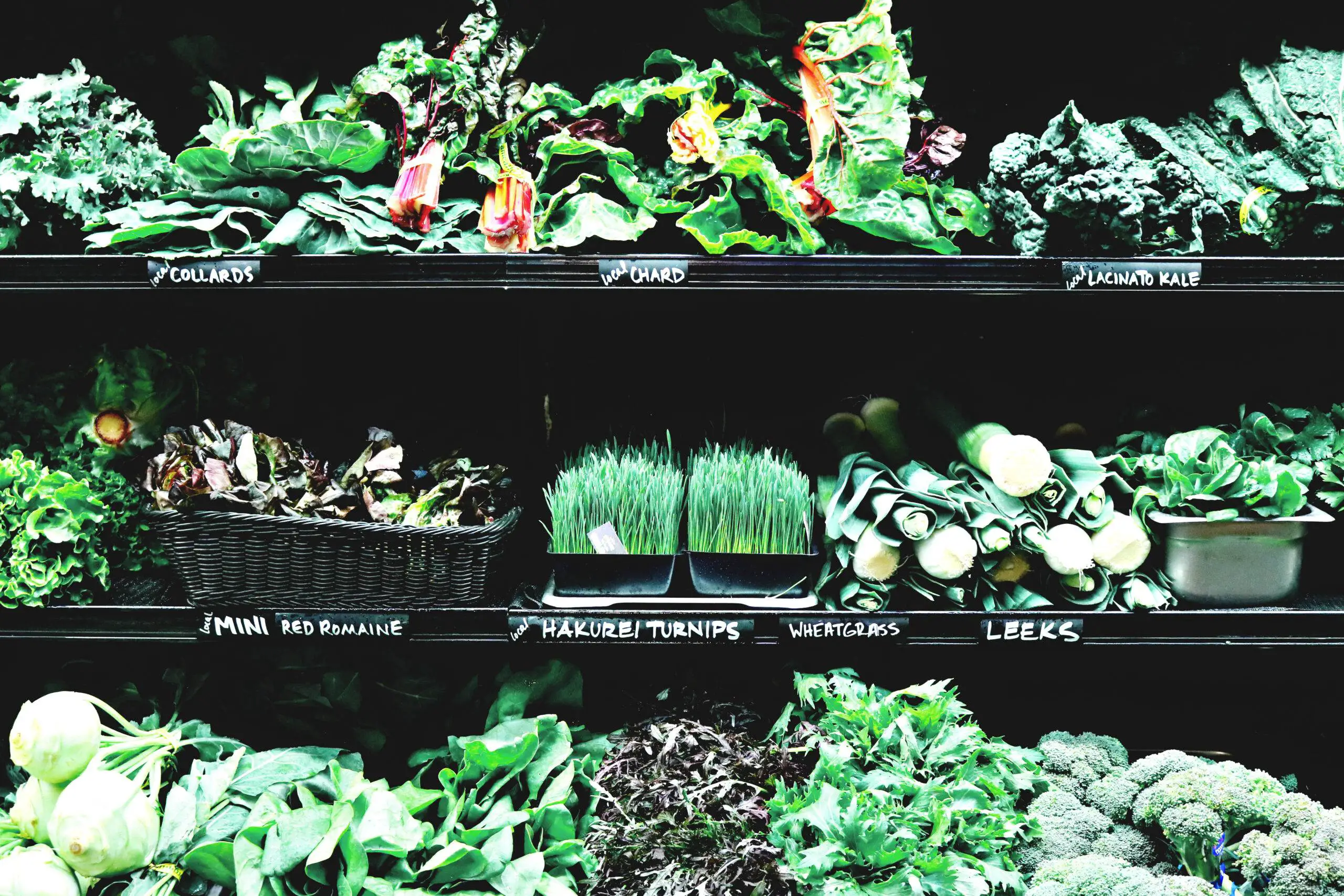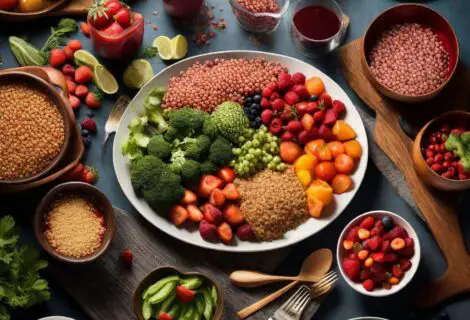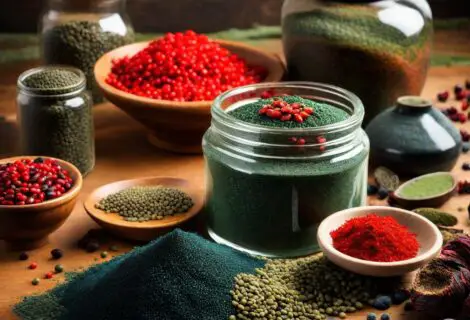The Benefits of Leafy Green Vegetables for Your Health
The Benefits of Leafy Green Vegetables for Your Health
I believe that incorporating leafy green vegetables into your diet is one of the best ways to improve your overall health. Leafy green vegetables are packed with essential vitamins, minerals, and nutrients that can help you maintain a healthy body and mind. In this article, I will explore in detail the numerous benefits of consuming various types of leafy green vegetables and provide you with tips on how to incorporate them into your daily diet.
What are Leafy Green Vegetables?
Leafy green vegetables are plants that have edible leaves and come in various shapes and sizes. Some of the most popular leafy green vegetables include spinach, kale, collard greens, Swiss chard, arugula, lettuce, and mustard greens. These vegetables are known for their rich green color, which is a result of the chlorophyll in their leaves. The chlorophyll also gives them their unique flavor and aroma.
Nutritional Benefits of Leafy Green Vegetables
Leafy green vegetables are some of the most nutritious foods you can eat. They are an excellent source of vitamins A, C, E, and K, as well as folic acid, iron, calcium, and potassium. These nutrients are essential for maintaining healthy bones, teeth, and muscles, as well as promoting good cardiovascular health.
5 Tips for Fast Seasonal Allergy Relief at Home
Health Benefits of Leafy Green Vegetables
- Improves Digestion: Leafy green vegetables contain a high amount of fiber, which aids in digestion and prevents constipation. A diet rich in leafy greens can help regulate bowel movements, reduce bloating, and improve overall gut health.
- Boosts Immunity: Leafy green vegetables are rich in vitamin C, which helps boost your immune system, making it easier to fight off infections and diseases. Kale, in particular, contains more vitamin C per serving than an orange.
- Reduces Inflammation: Leafy green vegetables contain anti-inflammatory compounds that can help reduce inflammation in the body, which is linked to several chronic diseases. Spinach, for example, is rich in flavonoids, which have been shown to reduce inflammation and improve cardiovascular health.
- Helps with Weight Loss: Leafy green vegetables are low in calories and high in fiber, which can help you feel full for longer and reduce your overall calorie intake. Kale, in particular, is low in calories and high in protein, making it an ideal food for weight loss.
The Power of Whole Foods Plant-Based Eating: A Lifestyle Choice
The Benefits of Specific Leafy Green Vegetables
Kale
Kale is a cruciferous vegetable that has gained popularity in recent years due to its numerous health benefits. It is a great source of vitamin C, vitamin K, calcium, and iron. Furthermore, kale is rich in antioxidants, which can help prevent oxidative damage to your cells. Eating kale has been linked to reduced inflammation, improved heart health, and a lower risk of cancer.
Taste and Cooking: Kale has a slightly bitter taste and a tough texture. It is commonly eaten raw in salads, but it can also be sautéed, roasted, or blended into smoothies.
Nutritional Value: The table below shows the nutritional value of one cup (67 grams) of chopped kale.
| Nutrient | Amount |
| Calories | 33 |
| Carbohydrates | 6 g |
| Fiber | 1 g |
| Protein | 3 g |
| Vitamin A | 206% of the Daily Value (DV) |
| Vitamin C | 134% of the DV |
| Vitamin K | 684% of the DV |
| Calcium | 9% of the DV |
| Iron | 6% of the DV |
Cost: On average, kale is relatively inexpensive and can be found in most grocery stores. It is often sold by the bunch or by weight, and the cost can vary depending on the season and location.
Spinach
Spinach is a nutrient-dense leafy green vegetable that is an excellent source of vitamins A, C, and K, as well as iron, calcium, and potassium. Furthermore, spinach is rich in antioxidants, which can help protect your cells from damage. Eating spinach has been linked to improved eye health, reduced inflammation, and a lower risk of cancer.
Taste and Cooking: Spinach has a mild and slightly sweet taste, with a soft and tender texture. It is commonly eaten raw in salads, but it can also be sautéed, steamed, or added to soups and stews.
Nutritional Value: The table below shows the nutritional value of one cup (30 grams) of raw spinach.
| Nutrient | Amount |
| Calories | 7 |
| Carbohydrates | 1 g |
| Fiber | 1 g |
| Protein | 1 g |
| Vitamin A | 56% of the DV |
| Vitamin C | 14% of the DV |
| Vitamin K | 181% of the DV |
| Calcium | 2% of the DV |
| Iron | 4% of the DV |
Cost: Spinach is relatively inexpensive and can be found in most grocery stores. It is often sold by the bunch or by weight, and the cost can vary depending on the season and location.
Collard Greens
Collard greens are a cruciferous vegetable that is similar to kale but has a milder taste. They are an excellent source of vitamins A, C, and K, as well as calcium and potassium. Collard greens are also rich in antioxidants, which can help prevent oxidative damage to your cells. Eating collard greens has been linked to improved bone health, reduced inflammation, and a lower risk of cancer.
Taste and Cooking: Collard greens have a slightly bitter taste and a chewy texture. They are commonly eaten cooked, often in soups or stews, but they can also be sautéed or steamed.
Nutritional Value: The table below shows the nutritional value of one cup (190 grams) of cooked collard greens.
| Nutrient | Amount |
| Calories | 49 |
| Carbohydrates | 11 g |
| Fiber | 8 g |
| Protein | 5 g |
| Vitamin A | 308% of the DV |
| Vitamin C | 58% of the DV |
| Vitamin K | 966% of the DV |
| Calcium | 27% of the DV |
| Iron | 10% of the DV |
Cost: Collard greens are relatively inexpensive and can be found in most grocery stores. They are often sold by the bunch or by weight, and the cost can vary depending on the season and location.
Swiss Chard
Swiss chard is a leafy green vegetable that is packed with nutrition. It is an excellent source of vitamins A, C, and K, as well as magnesium, iron, and potassium. Swiss chard is also rich in antioxidants, which can help protect your cells from damage. Eating Swiss chard has been linked to improved heart health, reduced inflammation, and a lower risk of cancer.
Taste and Cooking: Swiss chard has a slightly bitter and earthy taste, with a tender texture. It is commonly eaten cooked, often sautéed or steamed, but it can also be eaten raw in salads.
Nutritional Value: The table below shows the nutritional value of one cup (36 grams) of cooked Swiss chard.
| Nutrient | Amount |
| Calories | 7 |
| Carbohydrates | 1 g |
| Fiber | 1 g |
| Protein | 1 g |
| Vitamin A | 214% of the DV |
| Vitamin C | 18% of the DV |
| Vitamin K | 716% of the DV |
| Calcium | 5% of the DV |
| Iron | 4% of the DV |
Cost: Swiss chard is relatively inexpensive and can be found in most grocery stores. It is often sold by the bunch or by weight, and the cost can vary depending on the season and location.
Arugula
Arugula, also known as rocket, is a leafy green vegetable that has a peppery taste. It is an excellent source of vitamins A, C, and K, as well as calcium and iron. Arugula is also rich in antioxidants, which can help prevent oxidative damage to your cells. Eating arugula has been linked to improved bone health, reduced inflammation, and a lower risk of cancer.
Taste and Cooking: Arugula has a distinct peppery and slightly bitter taste. It is commonly eaten raw in salads, but it can also be used as a topping for pizzas or added to sandwiches and wraps.
Nutritional Value: The table below shows the nutritional value of one cup (20 grams) of raw arugula.
| Nutrient | Amount |
| Calories | 5 |
| Carbohydrates | 0.7 g |
| Fiber | 0.3 g |
| Protein | 0.5 g |
| Vitamin A | 47% of the DV |
| Vitamin C | 4% of the DV |
| Vitamin K | 11% of the DV |
| Calcium | 2% of the DV |
| Iron | 2% of the DV |
Cost: Arugula is relatively inexpensive and can be found in most grocery stores. It is often sold by the bunch or by weight, and the cost can vary depending on the season and location. You may enjoy this…Healthy Eating on a Budget: Tips and Tricks for a Nutritious Diet.
Mustard Greens
Mustard greens are a cruciferous vegetable that are similar to kale and collard greens. They are an excellent source of vitamins A, C, and K, as well as calcium and potassium. Mustard greens are also rich in antioxidants, which can help prevent oxidative damage to your cells. Eating mustard greens has been linked to improved heart health, reduced inflammation, and a lower risk of cancer.
Taste and Cooking: Mustard greens have a slightly bitter taste with a spicy kick. They are commonly eaten cooked, often sautéed or steamed, but they can also be eaten raw in salads.
Nutritional Value: The table below shows the nutritional value of one cup (56 grams) of cooked mustard greens.
| Nutrient | Amount |
| Calories | 21 |
| Carbohydrates | 3 g |
| Fiber | 2 g |
| Protein | 3 g |
| Vitamin A | 118% of the DV |
| Vitamin C | 57% of the DV |
| Vitamin K | 527% of the DV |
| Calcium | 10% of the DV |
| Iron | 5% of the DV |
Cost: Mustard greens are relatively inexpensive and can be found in most grocery stores. They are often sold by the bunch or by weight, and the cost can vary depending on the season and location.
How to Incorporate Leafy Green Vegetables into Your Diet
Incorporating leafy green vegetables into your diet is easy and can be done in a variety of ways. Here are some tips on how to add more leafy green vegetables to your meals:
- Add greens to smoothies: Add a handful of spinach, kale, or Swiss chard to your favorite smoothie recipe. It’s an easy and tasty way to get your daily dose of greens.
- Make a salad: Use a mix of different greens to make a nutrient-packed salad. Add some protein, such as grilled chicken or chickpeas, and your favorite dressing for a satisfying meal.
- Sauté or stir-fry: Sauté or stir-fry your favorite leafy greens with garlic and olive oil for a quick and healthy side dish.
- Add to soups and stews: Add collard greens, spinach, or mustard greens to your favorite soup or stew recipe for added nutrition and flavor.
- Make a wrap or sandwich: Use collard greens or lettuce leaves as a wrap or add them to your sandwich for added crunch and nutrition.
Nutritional Value and Cost Comparison
To help you compare the nutritional value and cost of each leafy green vegetable, I’ve created a table that shows the average cost per pound and the nutritional value per 100 grams.
| Leafy Green Vegetable | Average Cost per Pound | Calories per 100g | Vitamin A | Vitamin C | Calcium | Iron |
|---|---|---|---|---|---|---|
| Kale | $2.99 | 50 | 206% | 134% | 9% | 6% |
| Spinach | $2.49 | 23 | 56% | 14% | 2% | 4% |
| Collard Greens | $2.29 | 30 | 308% | 58% | 27% | 10% |
| Swiss Chard | $3.99 | 19 | 214% | 18% | 5% | 4% |
| Arugula | $4.99 | 25 | 47% | 4% | 2% | 2% |
| Mustard Greens | $2.99 | 26 | 118% | 57% | 10% | 5% |
A Comparison of Leafy Green Vegetables
As you can see, each leafy green vegetable has its own unique nutritional value and cost. Depending on your personal preferences and dietary needs, you may choose to consume one or more of these vegetables regularly.
Call to Action
I hope you found my blog post insightful and informative. Now, I would like to encourage you to take action and engage with the content. Please share your thoughts and suggestions in the comments section below. Your feedback can help me improve the quality of my content and create more meaningful posts.
Additionally, if you have had any experiences related to the topic that you would like to share, please don’t hesitate to do so. Your personal experiences can provide valuable insights to other readers and foster a sense of community.
Finally, if you found this post helpful, please share it with others who may benefit from it. By doing so, you can help spread the word and potentially make a positive impact on someone’s life.
Thank you for taking the time to read my post, and I look forward to engaging with you in the comments section.
11 Foods to Eat for Glowing Skin: Glow-Getter’s Delight
FAQ for the Benefits of Leafy Green Vegetables
Can leafy green vegetables help with weight loss?
Yes, leafy green vegetables are low in calories and high in fiber, making them an excellent choice for weight loss.
Can leafy green vegetables help improve my digestion?
Yes, leafy green vegetables are an excellent source of fiber, which can help improve digestion and prevent constipation.
How should I store leafy green vegetables?
To keep your leafy green vegetables fresh, store them in a plastic bag in the refrigerator. Make sure to wash them thoroughly before consuming.
Eating Spinach Can Boost Your Health and Energy Levels
Discover the Benefits of Vitamin B12: A Complete Guide
Helpful Resource









